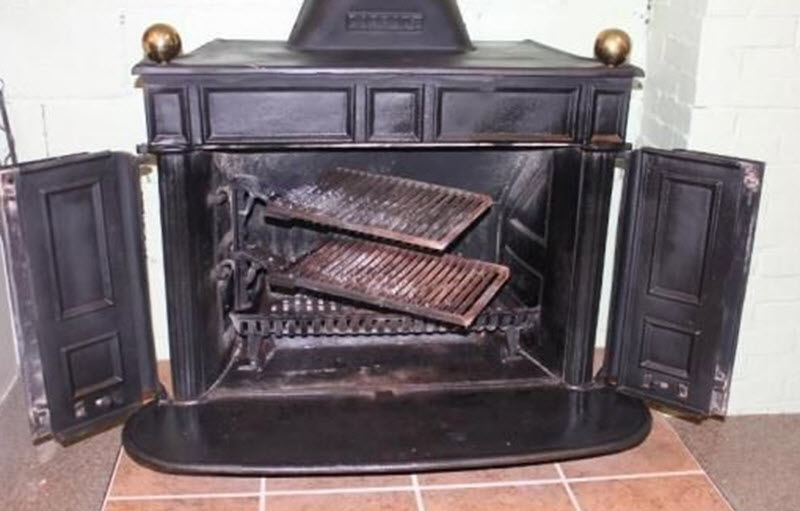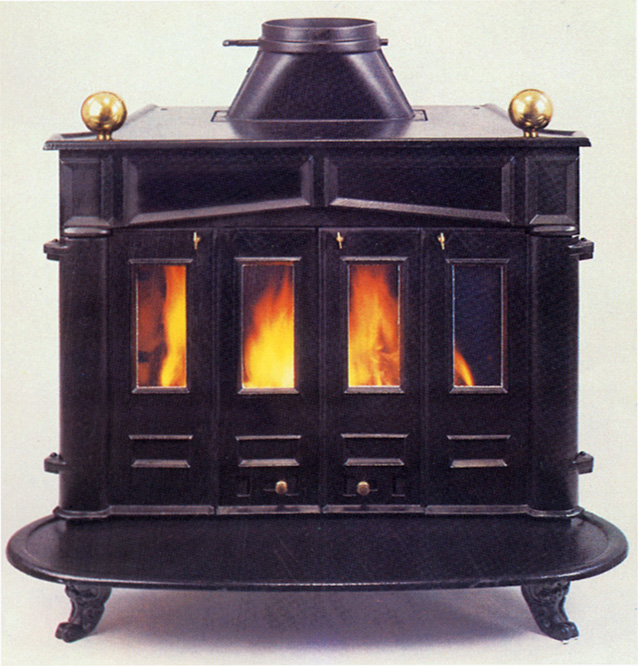
Franklin Stove: How It Shaped Modern Climate Science
The Franklin stove, an ingenious invention attributed to Benjamin Franklin, signifies a pivotal moment in the evolution of heating technology. Crafted during one of the coldest winters in history, your perspective on the Franklin stove is not just of a simple heating appliance, but as a blend of comfort and climate adaptation technology. Historian Joyce Chaplin explores this lesser-known invention in her recent book, highlighting its broader implications on the history of atmospheric science. Franklin’s design not only revolutionized how colonists warmed their homes but also contributed to fundamental shifts in our understanding of weather phenomena, such as the Gulf Stream. By analyzing the intersection of Franklin’s invention with contemporary climate challenges, Chaplin emphasizes its enduring relevance in discussions about our impact on the environment and climate adaptation.
Renowned for his many contributions, Benjamin Franklin’s innovative fireplace design, commonly referred to as the Franklin stove, exemplifies early American ingenuity. Exploring Franklin’s work reveals how this early heating device served as a precursor to modern climate adaptation technologies. The prototype’s unique ability to enhance indoor warmth efficiently reflects changing societal needs during an era of significant climatic challenges. Ultimately, the stove not only improved occupant comfort, but also sparked significant discourse on atmospheric phenomena and human interaction with the environment. By linking Franklin’s pursuits with the insights found in Joyce Chaplin’s analysis, we gain a deeper appreciation for the intricate relationship between innovative technology and climate understanding.
The Franklin Stove: A Revolutionary Invention
The Franklin stove, designed by Benjamin Franklin in the 18th century, represents a pivotal moment in the history of American innovation. Unlike traditional fireplaces that lost significant heat, the Franklin stove was engineered to maximize heating efficiency. By employing a series of iron plates, the stove was able to radiate heat more effectively into a room while using less wood. This not only improved comfort for users but also addressed the scarcity of firewood during harsh winters, a pressing concern in that era.
Franklin’s invention not only catered to the practical needs of colonists but also sparked broader discussions about climate adaptation technology. As settlers moved further into the uncharted territories, they faced increasing challenges due to deforestation and resource management. The Franklin stove, in this sense, was not merely a home appliance; it embodied a transformative approach to environmental awareness and technological ingenuity. Joyce Chaplin’s work highlights these aspects, emphasizing how the stove altered perceptions of comfort and sustainability in a rapidly changing world.
Understanding Atmospheric Science Through Franklin’s Innovations
In addition to its practical applications, the Franklin stove played a significant role in enhancing the understanding of atmospheric science. Franklin was intrigued by concepts of convection and heat transfer, which he skillfully applied to both indoor heating and outdoor weather patterns. For example, he likened the heat rising from the stove to the movement of air currents that drove storm systems along the Atlantic coast, thus connecting domestic experiences with larger meteorological phenomena. This bridging of personal and scientific knowledge was revolutionary in its own right.
The relationship between the Franklin stove and atmospheric science underscores a crucial theme in Joyce Chaplin’s analysis; that is, Franklin’s work was foundational to the evolution of meteorological studies. He not only made significant strides in understanding wind patterns and ocean currents but also encouraged a lay audience to grasp these concepts through relatable examples. This democratization of scientific thought was crucial for engaging the public with the emerging field of atmospheric science, illustrating how inventions can drive intellectual curiosity and environmental awareness.
Climate Context of the Franklin Stove
The design of the Franklin stove arose from a unique historical context marked by extreme weather events, specifically the harsh winter between 1740 and 1741. During this period, major harbors experienced freezing temperatures, leading to widespread famine and hardship. Franklin’s response to these conditions was not only to create a more efficient means of heating but also to reflect an Enlightenment era belief in human ingenuity to solve pressing problems. Chaplin’s exploration of this context highlights how Franklin’s innovations went beyond mere utility; they were rooted in a desire to adapt to climate challenges.
Thus, the Franklin stove serves as a case study in climate adaptation strategies, particularly during times of environmental distress. Rather than accepting the status quo, Franklin actively sought solutions that could enhance life quality amidst adversity. This drive reflects a broader narrative about resilience and innovation that resonates in modern discussions about climate change and adaptation technologies. By learning from Franklin’s approach, contemporary society is reminded of the importance of innovative thinking in the face of environmental crises.
Franklin’s Broader Impact on Technology and Society
Benjamin Franklin’s contributions to science and technology extended far beyond the invention of the stove. His interest in atmospheric phenomena helped lay the groundwork for future scientific inquiry, particularly in understanding how humans could manipulate their environment through technology. Take, for example, Franklin’s experiments with electricity, which, alongside his work on the Franklin stove, demonstrates a holistic approach to innovation that sought to improve both comfort and understanding of natural forces. His legacy is one of intertwining scientific exploration with practical application.
This intersection of science and everyday life is a pertinent theme in Joyce Chaplin’s analysis of Franklin’s role as a scientist and inventor. By emphasizing the profound impact of inventions like the Franklin stove, we begin to see how technology shapes not just individual lives but entire societies. Franklin’s foresight into the benefits of efficient heating systems and climate adaptation illustrates a visionary approach—one that encouraged future generations to view science as a tool for social progress and adaptation to changing environments.
Lessons from Franklin in the Age of Climate Change
Today, as we grapple with the realities of climate change, Franklin’s innovations offer deep lessons on the nature of technological optimism and its potential pitfalls. Joyce Chaplin’s book warns against viewing any single invention as a silver bullet to solve the complex, multifaceted challenges we face. Instead, it encourages a collaborative approach to innovation, where multiple solutions across diverse fields work in concert to address climate adaptation and sustainability. Franklin’s awareness of air pollution and its hazards serves as a relevant commentary for modern innovators.
In essence, the ethos of Franklin’s work resonates with contemporary efforts in science and technology aimed at mitigating climate crises. Franklin understood the limits of his inventions, often emphasizing the need for continual improvement and adaptation. This perspective is practical; it empowers present and future innovators to remain critical of their solutions and keep seeking diverse methods for ensuring environmental stability. Just as Franklin prompted a reevaluation of energy sources like wood and coal, we are called to reconsider our current reliance on fossil fuels and explore innovative pathways toward a sustainable future.
The Interplay Between Invention and Public Understanding
Franklin’s pedagogical approach to science was remarkable for its time, especially in how he made complex ideas more relatable and accessible to the general populace. Through inventions like the Franklin stove, he effectively illustrated scientific principles and their practical implications on everyday life. By connecting the mechanics of his stove to atmospheric concepts, Franklin invited the public to engage with science on a more personal level, which is crucial for fostering wider appreciation and understanding of scientific endeavors.
This strategy is particularly relevant for today’s climate discourse. As the world faces critical environmental changes, the ability to communicate scientific ideas effectively to the public becomes paramount. Just as Franklin simplified atmospheric science through relatable analogies, modern scientists and communicators must find ways to make the implications of climate science concrete and understandable for everyone. Thus, Franklin’s legacy continues to influence how we think about the transmission of scientific knowledge and the public’s role in understanding and combating climate change.
The Legacy of Franklin’s Inventions in Modern Science
The impact of the Franklin stove extends into the modern era, serving as a foundational block in the development of climate adaptation technologies. Not only did it revolutionize heating methods in homes, but it also initiated critical conversations about energy efficiency and environmental stewardship. Franklin’s emphasis on reducing smoke emissions and increasing heating efficacy early on highlights an awareness of the environmental consequences of energy use that resonates with today’s energy debates.
In her detailed narrative, Joyce Chaplin showcases how Franklin’s innovations paved the way for a more sophisticated understanding of how human behavior intersects with environmental concerns. This legacy continues to inspire contemporary scientists and innovators who strive to create sustainable technologies. By revisiting Franklin’s work and its implications, we can better understand the importance of multi-faceted approaches in tackling today’s environmental challenges and ensuring responsible technological advancement.
Franklin’s Contributions to the Study of Weather Patterns
Benjamin Franklin’s work laid the groundwork for a profound understanding of weather patterns and atmospheric phenomena. His early studies on the Gulf Stream not only contributed to nautical navigation but also demonstrated how interconnected our climate systems are. By observing the relationships between temperature, pressure, and wind direction, Franklin offered insights that were innovative for his time and sparked further scientific inquiry into meteorology.
Through his inventions and writings, Franklin championed the idea that understanding weather could improve people’s lives. His discussions on atmospheric dynamics effectively merged practical solutions, like the Franklin stove, with theoretical science, which inspired a future generation of meteorologists and scientists. This influence endures today as we continue to investigate and address climate variability and its effects on society, proving that Franklin’s contributions to atmospheric science extend far beyond his lifetime.
Revisiting History: Insights from Joyce Chaplin on Franklin’s Era
Joyce Chaplin’s exploration of Benjamin Franklin’s multifaceted life reveals critical insights into the intersection of technology and society during the 18th century. Her research sheds light on how inventions like the Franklin stove emerged not only from personal necessity but as reflections of the social and environmental conditions of the time. By framing Franklin’s innovations within their historical context, she highlights the enduring relevance of his ideas in contemporary discussions about technological advancement and climate change adaptation.
Chaplin’s work prompts readers to reconsider the legacy of historical figures like Franklin, emphasizing the lessons we can draw from their experiences in tackling modern problems. By delving into Franklin’s life, Chaplin illustrates the crucial role that science and innovation played in shaping public policy, societal norms, and personal resilience in the face of environmental adversity. As we move forward, understanding these connections can empower us to address the challenges of our time more effectively.
Frequently Asked Questions
What is the Franklin stove and why is it significant in the history of Benjamin Franklin’s inventions?
The Franklin stove is a revolutionary heating device invented by Benjamin Franklin in the early 18th century. It was designed as a more efficient fireplace that produced more heat while using less wood. This invention is significant not only for its practical benefits in home heating but also for its role in advancing scientific understanding of atmospheric science, as Franklin applied principles of convection to improve indoor air quality.
How did the Franklin stove contribute to climate adaptation technology during the 18th century?
The Franklin stove exemplifies climate adaptation technology, developed during the harsh winter of 1740-41. Its innovative design allowed for improved heating efficiency, which helped colonists cope with extreme cold while also addressing the rising demand for firewood due to deforestation. Franklin’s stove allowed for a more sustainable use of resources, making it a key invention in adapting to the changing climate of the time.
In what ways did Ben Franklin’s stove impact our understanding of weather phenomena?
The Franklin stove impacted weather understanding by incorporating atmospheric science principles into its design. Franklin used the stove’s operation to explain how air movement influences weather patterns, including the Gulf Stream and storm systems along the Atlantic coast. His work not only advanced domestic heating but also contributed to broaden scientific discussions on meteorology.
What insights does Joyce Chaplin provide in her book about the Franklin stove and its historical context?
In her book, Joyce Chaplin explores the historical context surrounding the invention of the Franklin stove, highlighting its development during the Little Ice Age’s severe winter. She underscores how this invention was not merely a practical solution but a catalyst for new ways of thinking about technology’s role in human comfort and climate adaptation, linking Franklin’s efforts with broader environmental issues.
Why is the Franklin stove considered one of Benjamin Franklin’s lesser-known inventions, and what is its relevance today?
The Franklin stove is often overshadowed by Franklin’s more popular inventions, such as the lightning rod and bifocals. However, its relevance today lies in its innovative approach to energy efficiency and its implications for climate discussions, reflecting Franklin’s foresight in addressing environmental challenges—lessons that resonate amid contemporary climate adaptation and technological advancements.
How did the design of the Franklin stove minimize air pollution?
Benjamin Franklin aimed to reduce air pollution with the later versions of his stove by creating a system that effectively re-burned smoke, reducing the amount of unburned fuel particles released into the air. This innovative design approach not only enhanced the efficiency of heat generation but also demonstrated an early awareness of the need to mitigate emissions, a principle that remains vital in modern climate science.
What lessons can modern inventors learn from Franklin’s approach to technology and climate issues?
Modern inventors can learn from Franklin’s holistic approach to technology, recognizing that solutions to climate challenges require multifaceted strategies rather than single ‘silver bullet’ fixes. His technology often addressed immediate needs while anticipating long-term environmental impacts, emphasizing the importance of innovation that considers both efficiency and sustainability.
| Key Points |
|---|
| Joyce Chaplin’s new book explores Benjamin Franklin’s invention of the Franklin stove, highlighting its historical significance. |
| The Franklin stove was developed during the cold winter of 1740-1741 as a heating solution for colonists. |
| Franklin’s stove utilized a design to improve heating efficiency by burning less wood and transitioning to coal. |
| The stove contributed to the understanding of atmospheric science, linking indoor and outdoor air principles. |
| Franklin aimed to minimize smoke emissions with a design that re-burned smoke, showcasing his concern for air quality. |
| The book examines Franklin’s early life, inventions, and their implications for modern climate challenges and technology optimism. |
Summary
The Franklin stove stands as a remarkable testament to Benjamin Franklin’s innovative spirit and his profound impact on American history. This invention not only redefined heating practices in colonial America but also advanced the understanding of atmospheric science, making it a pivotal part of Franklin’s legacy. Through her recent exploration, Joyce Chaplin reveals how the Franklin stove was not merely a household object but a catalyst for new ideas about climate adaptation and technological progress. As we face contemporary environmental challenges, the lessons drawn from the development of the Franklin stove urge us to combine innovation with awareness, emphasizing the need for multiple solutions in our quest for sustainable energy and reduced carbon emissions.



